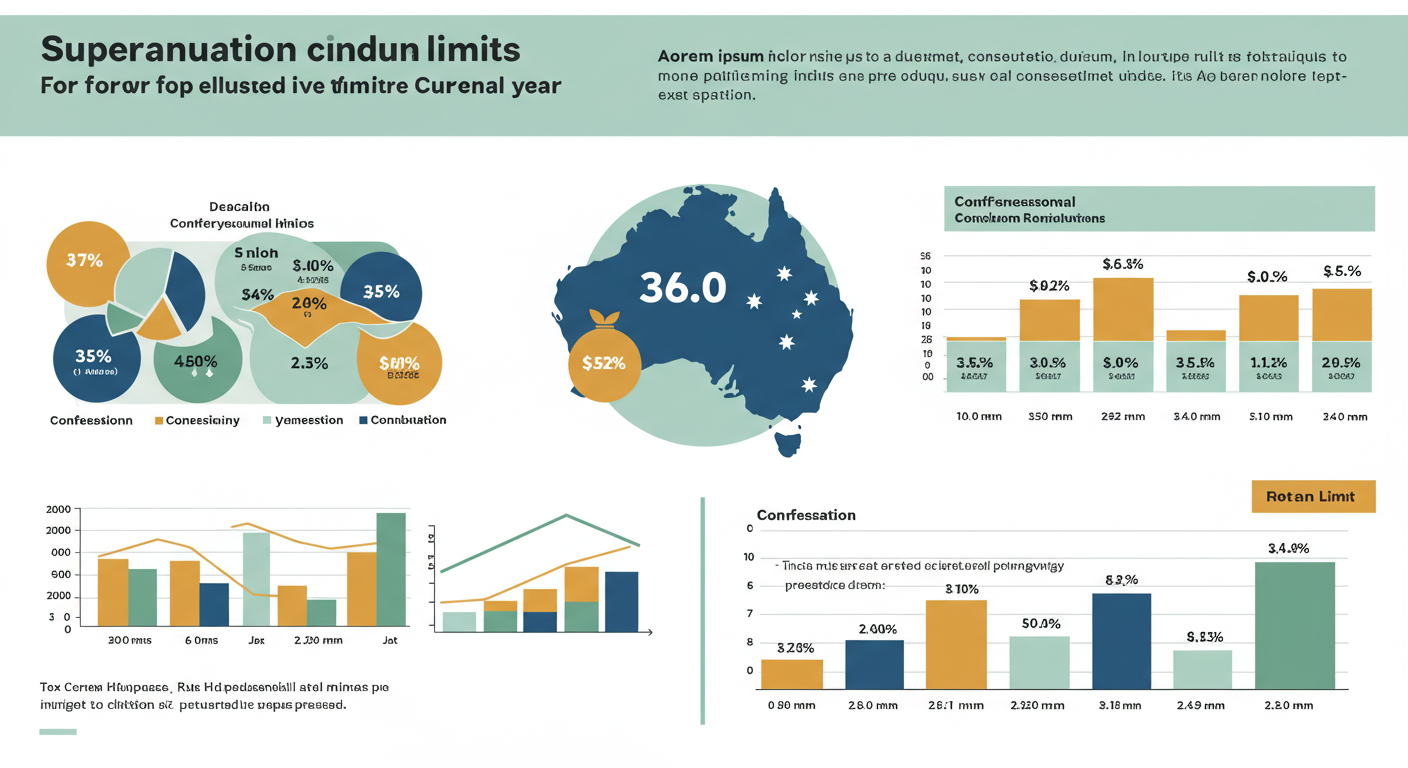How a simple conversation with your payroll department could add tens of thousands to your retirement nest egg
Picture this: You’re sitting across from your financial advisor, and they casually mention that you could’ve saved thousands in tax while building your super balance — if only you’d known about salary sacrificing. Sound familiar?
After fifteen years helping Australian families navigate their superannuation strategies, I’ve seen this scenario play out countless times. The good news? It’s never too late to start, and the strategies I’m about to share could genuinely transform your retirement outlook.
What Is Salary Sacrificing and Why Should You Care?
Let’s strip away the jargon. Salary sacrificing is where you choose to give up or ‘sacrifice’ part of your before-tax salary and add it directly into your super account. Instead of receiving this money in your pay packet (where it gets taxed at your marginal rate), these concessional contributions are taxed in the super fund at a rate of 15%.
Here’s where it gets interesting and profitable.
The Tax Savings That Make It Worthwhile
If you’re earning $80,000 annually, you’re paying 32.5% tax on every dollar above $45,000. But through salary sacrificing, that same money only faces 15% tax in your super fund. That’s a 17.5% tax saving on every dollar you sacrifice!
Let me put this in perspective with a real example from my practice:

Chleo’s Story: The $50,000 Surprise Chleo, a 35-year-old teacher earning $75,000, started salary sacrificing $5,000 annually. Over 30 years, assuming 7% annual returns, this strategy didn’t just save her $875 in tax each year — it added an extra $50,000 to her super balance by retirement compared to after-tax contributions.
Current Super Contribution Limits You Need to Know
The concessional contributions cap for 2025-26 is $30,000, which includes both your employer’s compulsory super contributions and any salary sacrifice amounts.
Here’s a practical breakdown:
| Income Level | Employer SG (12%) | Available for Salary Sacrifice |
|---|---|---|
| $60,000 | $7,200 | $22,800 |
| $80,000 | $9,600 | $20,400 |
| $100,000 | $12,000 | $18,000 |
| $120,000 | $14,400 | $15,600 |
Note: The Superannuation Guarantee (SG) rate increased from 11.5% to 12% from 1 July 2025
Smart Salary Sacrificing Strategies for Different Life Stages
Strategy 1: The Young Professional’s Power Play (Ages 25-35)
When you’re young, time is your greatest asset. Even small salary sacrifice amounts can create substantial wealth through compound growth.
The “Start Small, Think Big” Approach:
- Begin with 2-3% of your salary
- Increase contributions with each pay rise
- Take advantage of the full concessional cap as income grows

Example: Emma, 28, earning $65,000, sacrifices $100 per week ($5,200 annually). By age 65, this could grow to approximately $385,000, that’s the power of starting early!
Strategy 2: The Family Juggle (Ages 35-45)
This is often the trickiest period, mortgage payments, kids’ expenses, and career building all compete for your dollars. But it’s also when salary sacrificing becomes most tax-effective.
The Mortgage vs Super Balance: While paying off your mortgage faster saves interest, salary sacrificing can be more tax-efficient, especially if you’re in higher tax brackets.

Example: Mark and Lisa, both 40, earning $95,000 each, were torn between extra mortgage payments and super contributions. We calculated that salary sacrificing $10,000 annually would save them $2,175 in tax each, while providing $8,825 more for their retirement fund.
Strategy 3: The Pre-Retirement Boost (Ages 45-60)
This is prime time for salary sacrificing. Your income is typically at its peak, the kids might be more financially independent, and you have 15-20 years for growth.
The “Catch-Up” Strategy: If you have a total super balance of less than $500,000 on the prior 30 June, you can accumulate unused concessional contribution caps and potentially contribute more than the annual $30,000 limit.
Strategy 4: The Mature Approach (Ages 60+)
Even if you’re approaching retirement, salary sacrificing can still make sense, especially if you’re planning to work beyond 67.
Advanced Strategies Getting Every Dollar to Work Harder
1. The Carry-Forward Rule: Your Secret Weapon
One of the most underutilized strategies I encounter is the carry-forward rule. This allows you to “catch up” on unused concessional contribution caps from previous years.
How It Works:
- You can carry forward unused caps for up to 5 years
- Only available if your total super balance is under $500,000
- Perfect for irregular income or bonus payments
Case Study: David, a 45-year-old consultant with variable income, had $40,000 in unused caps from previous years. When he received a $50,000 bonus, he salary sacrificed $45,000 (current year cap plus some carry-forward), saving $13,500 in tax.
2. Timing Your Contributions: The End-of-Year Strategy
Many families ask about timing. Should you spread contributions throughout the year or make a lump sum?
The Verdict: Regular contributions are generally better due to dollar-cost averaging (DCA), but there’s a strategic exception. If you’re expecting a pay rise or bonus, timing your contribution before 30 June can maximize your available cap for the following year.
3. The Spouse Strategy: Maximizing Household Super
Don’t forget about your partner! If one spouse earns significantly more, consider:
- Spouse contributions: The higher earner can contribute up to $3,000 annually to their lower-earning partner’s super and claim an 18% tax offset
- Rebalancing strategy: Ensure both partners are maximizing their concessional caps
Common Pitfalls and How to Avoid Them
1. Exceeding the Concessional Cap
The Problem: Contributing more than $30,000 annually triggers excess contribution tax.
The Solution: Track your total concessional contributions carefully. Remember, this includes employer contributions, salary sacrifice, and any personal deductible contributions.
2. Ignoring Cashflow Needs
The Problem: Over-sacrificing and creating cashflow stress.
The Solution: Never sacrifice more than you can comfortably afford. A good rule of thumb is ensuring you can still meet all essential expenses plus have an emergency fund.
3. Forgetting About Division 293 Tax
The Problem: If your income and concessional super contributions total more than $250,000, you may have to pay Division 293 tax.
The Solution: High earners should consider this additional 15% tax when calculating the benefits of salary sacrificing.
Tax Savings Analysis
Let’s break down the real tax savings across different income levels:
| Annual Income | Marginal Tax Rate | Tax on $10,000 Sacrifice | Super Tax (15%) | Net Tax Saving |
|---|---|---|---|---|
| $50,000 | 32.5% | $3,250 | $1,500 | $1,750 |
| $70,000 | 32.5% | $3,250 | $1,500 | $1,750 |
| $90,000 | 37% | $3,700 | $1,500 | $2,200 |
| $120,000 | 37% | $3,700 | $1,500 | $2,200 |
| $180,000 | 45% | $4,500 | $1,500 | $3,000 |
These figures don’t include Medicare Levy or Medicare Levy Surcharge considerations
Setting Up Your Salary Sacrifice: A Step-by-Step Guide
Step 1: Check Your Employment Agreement
Not all employers offer salary sacrificing, though most do. Check your employment contract or speak with HR.
Step 2: Calculate Your Available Cap
- Current year concessional cap: $30,000
- Minus employer SG contributions
- Minus any other concessional contributions
- Equals your available salary sacrifice capacity
Step 3: Consider Your Cash Flow
Use this simple formula: Monthly take home pay – Essential expenses – Emergency fund contributions = Available for salary sacrifice
Step 4: Complete the Paperwork
You’ll need to complete a salary sacrifice agreement with your employer. This typically includes:
- Amount to be sacrificed
- Frequency of contributions
- Super fund details
- Start date
Step 5: Review and Adjust
Your circumstances change, and so should your strategy. Review annually or when you receive pay rises, bonuses, or face significant life changes.
The Long-Term Impact:
Why Every Dollar Counts
Let me share some numbers that always surprise my clients. A 30-year-old earning $70,000 who salary sacrifices just $2,000 annually will accumulate approximately $157,000 more by retirement than someone who doesn’t sacrifice at all.
That’s the power of combining tax savings with compound growth over time.
But here’s what’s even more powerful — the psychological impact. Once you start salary sacrificing, you adjust your lifestyle to your new take-home pay. You don’t miss what you never see, but you definitely benefit from what you don’t pay in tax.
Technology and Tools: Making It Easier
Modern payroll systems make salary sacrificing easier than ever. Many employers offer online portals where you can:
- Set up or modify salary sacrifice arrangements
- Track your contributions against caps
- Model different scenarios
Additionally, most super funds provide calculators to help you determine optimal contribution levels. I particularly recommend the calculators on the Australian Taxation Office website and MoneySmart for independent, reliable calculations.
Is Salary Sacrificing Right for You?
After working with hundreds of Australian families, I can tell you that salary sacrificing isn’t just about tax savings — it’s about creating a systematic approach to building wealth for retirement.
The strategy works best when:
- You’re paying tax at 32.5% or higher
- You have stable income and can afford to reduce take-home pay
- You’re not at risk of exceeding contribution caps
- You have adequate emergency funds and insurance
Remember, superannuation is a long-term strategy. The money you contribute today is typically locked away until you reach preservation age (currently between 55-60 depending on when you were born).
Your Next Steps
If you’re ready to boost your super through salary sacrificing, here’s what I recommend:
- Calculate your current position: Use online calculators to determine your available concessional cap
- Assess your cash flow: Ensure you can comfortably afford the reduction in take-home pay
- Speak with your employer: Discuss salary sacrificing options and any administrative requirements
- Start conservative: Begin with an amount you’re comfortable with and increase gradually
- Monitor and adjust: Review your strategy annually and adjust as your circumstances change
The Compound Effect: Your Future Self Will Thank You
I’ve seen too many Australians reach retirement wishing they’d started salary sacrificing earlier. The combination of tax savings and compound growth over time creates wealth that’s hard to achieve through other means.
Whether you’re 25 or 55, whether you’re earning $50,000 or $150,000, there’s likely a salary sacrificing strategy that can improve your retirement outlook. The key is starting with a plan that fits your circumstances and adjusting as you go.
Your super balance isn’t just a number on a statement — it’s your future financial freedom. And salary sacrificing? It’s one of the most powerful tools available to help you get there.
Remember: This information is general in nature and doesn’t constitute personal financial advice. Consider your own circumstances and consult with a qualified financial advisor before making any decisions about salary sacrificing or superannuation contributions.
For the latest information on superannuation contribution limits and salary sacrificing rules, visit the Australian Taxation Office or MoneySmart websites.














